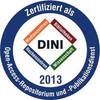In: Koch, Barbara (Hrsg.): Proceedings Silvilaser 2010 : the 10th International Conference on LiDAR Applications for Assessing Forest Ecosystems, September 14th - 17th, 2010, Freiburg, Germany. Freiburg, FeLis 2010, pp. 161-169
Preview |
PDF, English
- main document
Download (210kB) | Terms of use |
Abstract
In this study a semi-empirical model that was originally developed for stem volume estimation is used for aboveground biomass (AGB) estimation. The semi-empirical model is based on the relative heights of first echo LiDAR point cloud data and assumes a linear relationship between AGB and canopy volume. However, the usage of point cloud data leads to a computationally demanding task when processing large point cloud datasets for the generation of area-wide AGB maps. In the presented study the effects of using rasterized LiDAR data as input for the AGB model are investigated in order to speed up processing and to make use of the model on large spatial datasets. The canopy volumes are calculated from a Canopy Height Model (CHM). The optimum resolution of the CHM is determined by analyzing the effects of varying cell sizes (1.0 m, 1.5 m, 2.0 m, 3.0 m) on the achievable accuracies. Calibrating the model with rasterized input data having a spatial resolution of 2.0 m instead of using first echo point cloud data leads to a slight increase of the coefficient of determination (R2 = 0.70 to R2 = 0.72) and a slight decrease of the standard deviation of the prediction errors. For calibrating the model reference AGB is calculated per sample plot from local forest inventory data by means of averaged weighted (according to tree species and age class composition) extension factors. The influence of using rasterized LiDAR input data on the achievable accuracy of the assessed AGB is investigated for a coniferous dominated study area in Vorarlberg, Austria.
| Document type: | Book Section |
|---|---|
| Editor: | Koch, Barbara |
| Title of Book: | Proceedings Silvilaser 2010 : the 10th International Conference on LiDAR Applications for Assessing Forest Ecosystems, September 14th - 17th, 2010, Freiburg, Germany |
| Publisher: | FeLis |
| Place of Publication: | Freiburg |
| Date Deposited: | 30 Jul 2025 07:18 |
| Date: | 2010 |
| Page Range: | pp. 161-169 |
| Faculties / Institutes: | Fakultät für Chemie und Geowissenschaften > Institute of Geography |
| DDC-classification: | 550 Earth sciences |
| Further URL: |









